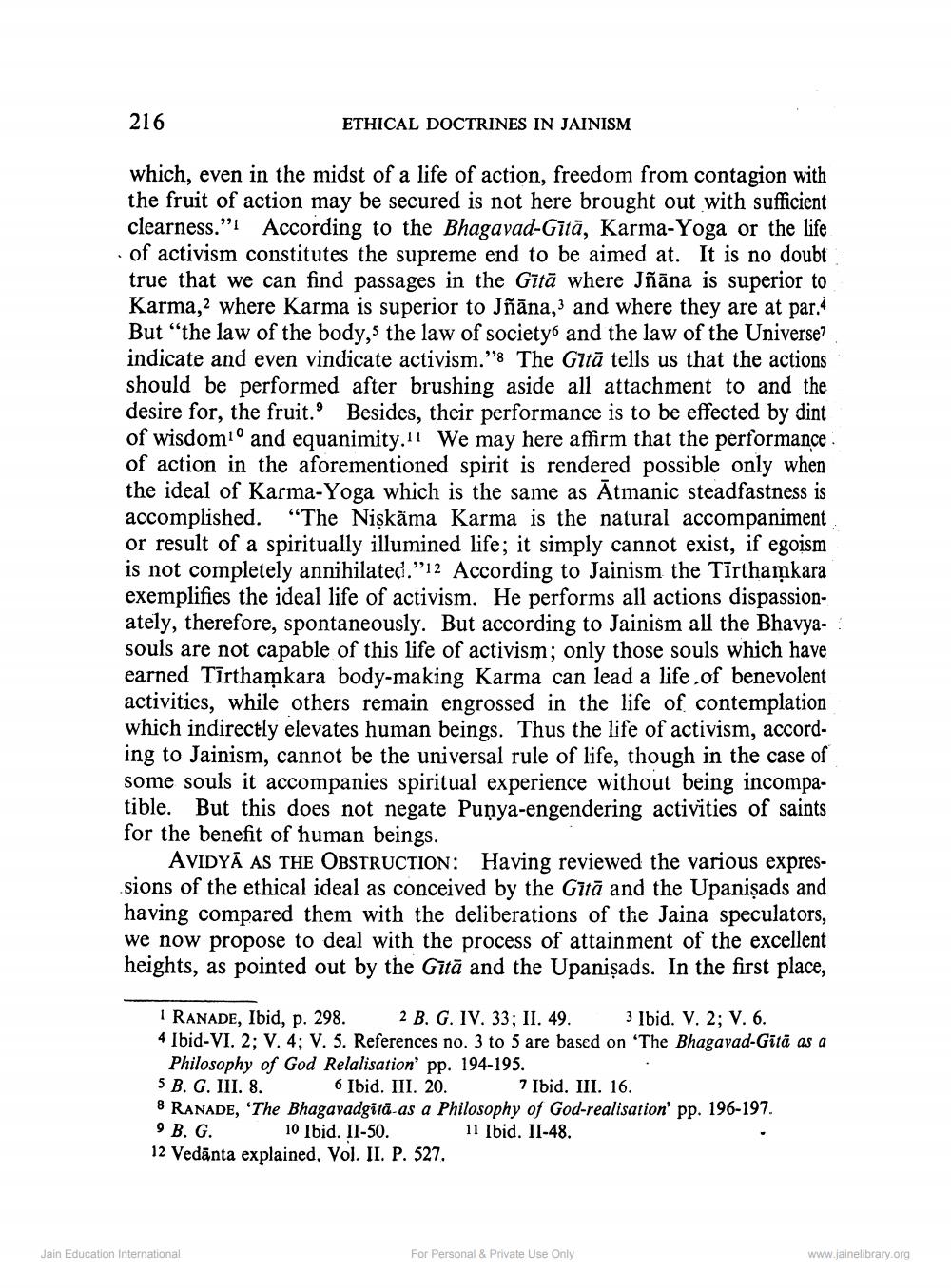________________
216
ETHICAL DOCTRINES IN JAINISM
which, even in the midst of a life of action, freedom from contagion with the fruit of action may be secured is not here brought out with sufficient clearness.”! According to the Bhagavad-Gītā, Karma-Yoga or the life of activism constitutes the supreme end to be aimed at. It is no doubt true that we can find passages in the Gītā where Jñāna is superior to Karma, 2 where Karma is superior to Jñāna,3 and where they are at par. But “the law of the body, the law of society and the law of the Universe? indicate and even vindicate activism.”8 The Gītā tells us that the actions should be performed after brushing aside all attachment to and the desire for, the fruit. Besides, their performance is to be effected by dint of wisdom1° and equanimity.11 We may here affirm that the performance of action in the aforementioned spirit is rendered possible only when the ideal of Karma-Yoga which is the same as Ātmanic steadfastness is accomplished. “The Nişkäma Karma is the natural accompaniment or result of a spiritually illumined life; it simply cannot exist, if egoism is not completely annihilated."12 According to Jainism the Tīrthamkara exemplifies the ideal life of activism. He performs all actions dispassionately, therefore, spontaneously. But according to Jainism all the Bhavyasouls are not capable of this life of activism; only those souls which have earned Tirthamkara body-making Karma can lead a life .of benevolent activities, while others remain engrossed in the life of contemplation which indirectly elevates human beings. Thus the life of activism, according to Jainism, cannot be the universal rule of life, though in the case of some souls it accompanies spiritual experience without being incompatible. But this does not negate Punya-engendering activities of saints for the benefit of human beings.
AVIDYĀ AS THE OBSTRUCTION: Having reviewed the various expressions of the ethical ideal as conceived by the Gitā and the Upanişads and having compared them with the deliberations of the Jaina speculators, we now propose to deal with the process of attainment of the excellent heights, as pointed out by the Gītā and the Upanisads. In the first place,
IRANADE, Ibid, p. 298. 2 B. G. IV. 33; II. 49. 3 Ibid. V. 2; V. 6. 4 Ibid-VI. 2; V. 4; V. 5. References no. 3 to 5 are based on 'The Bhagavad-Gītā as a
Philosophy of God Relalisation' pp. 194-195. 5 B. G. III. 8.
Ibid. III. 20. 7 Ibid. III. 16. 8 RANADE, 'The Bhagavadgitā-as a Philosophy of God-realisation' pp. 196-197. 9 B. G. 10 Ibid. II-50. 11 Ibid. II-48. 12 Vedānta explained. Vol. II. P. 527.
Jain Education International
For Personal & Private Use Only
www.jainelibrary.org




